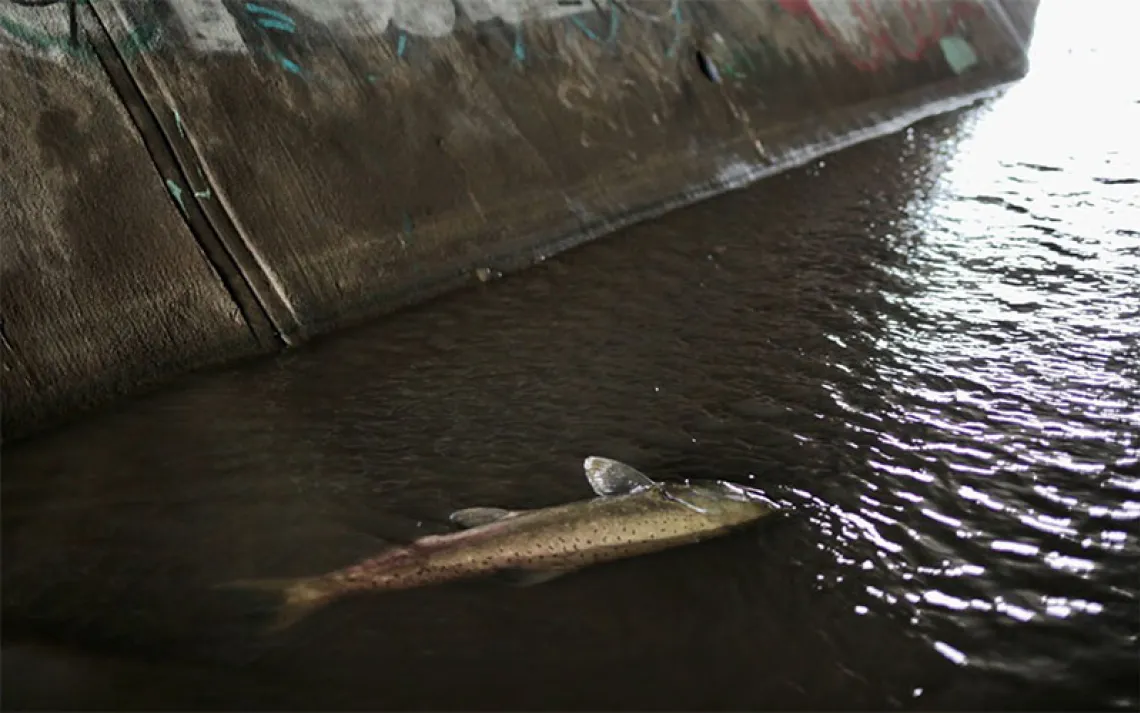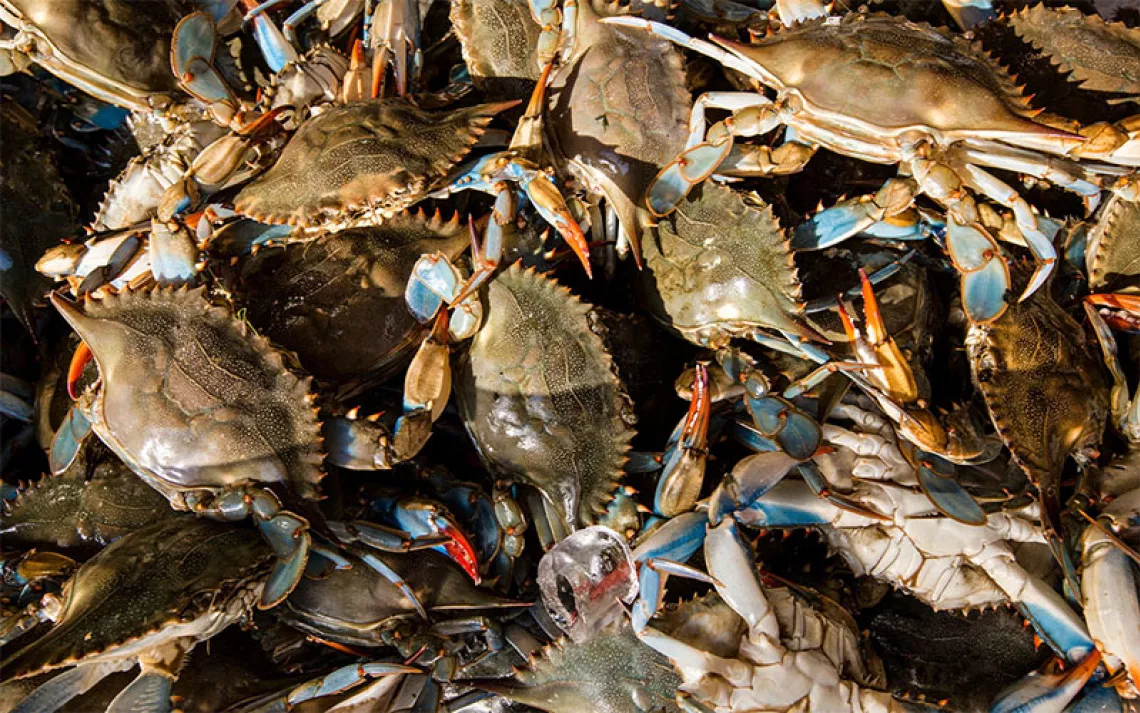The Last Human-Wild Collaborators
Humans have collaborated with at least six wild species. Now it's down to three.

Photo courtesy of Dominic Cram
Humans have had mutually beneficial collaborations with at least six different species, including wolves, orcas, and a species of dolphin that is now extinct.
Stories passed down within Indigenous communities of present-day North America describe collaborative relationships between their ancestors and wolves. It is believed that past Blackfoot and Dakota Sioux hunters emulated wolf packs in the way they would study roaming bison before coordinating an ambush, targeting calves and other vulnerable members of the herd in the process. Both groups may have even worked together to take down prey with the wolves’ acute senses and speed complementing the human hunters’ ability to use tools such as spears. Analysis of canid skulls excavated from caves in Europe and Asia points to the possibility of collaboration with wolves occurring abroad too.
Scottish immigrants and members of the aboriginal Yuin Nation also used to hunt with orcas in Australia’s Twofold Bay for two centuries up until the early 1900s. Siberian Yupik and Chukchi people co-hunted with orcas in the Chukotka region of Russia. Cooperative orcas would signal whalers with splashing once their shared prey had been successfully corralled and trapped. The crew would then harpoon the whale and reward their wild partners with a treat—the tongue—before harvesting the rest of the remains for whale oil.
Cooperation between Bunjalung fishers and a species of bottlenose dolphins in eastern Australia existed up until the early 20th century as well. The dolphins, after expertly herding a bulk of fish, would then cue fishers to cast their nets around the gathered mass. In return, the dolphins got an easy meal from fish that managed to escape from the nets.
Humans, orcas, wolves, and dolphins are far from unique in forming these mutually beneficial interactions between different species, also known as mutualisms. Coyotes and badgers hunting squirrels together are one example. Sea anemones protecting clownfish from predators while gleaning nutrients from their visitors is another. But collaborations between humans and other species have become increasingly rare. Each of these now extinct interactions between humans and wildlife were lost due to acts of violence from humans. Co-hunting with wolves ended in North America after the near extermination of the species by European settlers and forced assimilation of Indigenous populations. In a similar vein, cooperation in eastern Australia ceased after settlers killed a cooperative dolphin and two cooperative orcas.
Despite the nuances of each past and present human-wildlife cooperative relationship, behavioral ecologist Dominic Cram’s review on the phenomena highlights some overarching patterns. All known examples of human-wildlife cooperation involve foraging where animals exchange information about a food source’s location for humans’ use of tools. “There can be a level of arbitrariness to it. It's extremely interesting,” says Cram, who specializes in cooperative behavior and animal health. “But then you can sometimes struggle to find a unifying overall process that has led to all of this because it has all arisen through quirks and randomness and culture.”
While there is anecdotal evidence of some collaboration between hunters and corvids like ravens and crows, presently, the only known and confirmed cooperation between humans and wildlife occurs with greater honeyguide birds throughout sub-Saharan Africa and two different dolphin species in Brazil and Myanmar.

Human-honeyguide cooperation in Cameroon. Photo courtesy of Dominic Cram.
Once more widespread throughout sub-Saharan Africa, cooperative honey-hunting with greater honeyguides currently exists only in pockets of the region. It’s speculated that this partnership spans at least a millennium, following sometime after our human ancestors’ mastery of stone tools and fire millions of years ago.
According to Mazi Sanda, an ecologist at the University of Ngaoundéré and coauthor of Honey Hunting and Beekeeping in Adamawa (Cameroon), a small number of villagers still practice traditional honey-hunting within the Adamawa region. However, the practice is now in decline in the country’s honey-gathering hot spot due to a generational shift to beekeeping with private hives that began in the early 2000s.
In Adamawa, both honeyguide birds and participating honey-hunters have been known to initiate foraging activities with each other. Honey-hunters call the birds in a myriad of ways—through whistling, rapping of nearby trees, or singing a tune special to the region. Other times, the bird initiates by flying up to honey-hunters out in the Adamawa Plateau and beckoning with a chatter-like noise.
“As soon as the human will see that, then they will start following the birds from one tree to another and then up to the nest,” says Sanda. The honeyguide bird will fly off in the direction of the prize beehive, guiding its human partner to nests hidden high up in tree hollows and beneath the savanna soil. Once at the nest, the human subdues the bees using fire. By doing so, the honeyguide bird is then able to access the leftover honeycomb, a source of nutrients for one of the few species capable of digesting beeswax. In turn, honey-hunters see increased foraging success through higher honey yields and shorter search times while the birds gain access to honeycombs.
There are honey-hunters that deviate from this practice, instead taking the entire hive to increase their honey yields or hiding the nest with hopes of fueling the bird’s hunger for future quests. Sanda estimates that 80 percent of honey-hunters do so without assistance from honeyguides at all because they believe it is quicker and less likely to lead to danger—unpleasant experiences of being led to surprise snakes and the occasional leopard have been voiced by villagers to Sanda, a fate local folklore ascribes to retaliation from honeyguides after not being paid off in comb. Some residents in the region have quit honey-hunting altogether for beekeeping, motivated by higher and better-quality honey yields.
However, the older generation frequently shares with Sanda that they believe these shifts are causes for concern. They say that withholding of honeycombs makes honeyguide birds less likely to cooperate in the future. If the relationship ends, not only would foraging benefits for both parties be lost, but local culture would be as well.
Elder villagers tell Sanda, “This is our tradition. We should keep it going.”

Human-dolphin cooperation in Brazil. Photo by Fábio G. Daura-Jorge.
In the small beach town of Laguna in southern Brazil, local fishing crews and a similarly local population of bottlenose dolphins have worked together to capture mullet for over a century. Not all dolphins in the area participate, says Mauricio Cantor, a biologist at Oregon State University and lead author of a recently published study on human-dolphin cooperation within Laguna. Cantor and his collaborators estimate that about a third of the local bottlenose dolphin population are currently cooperative.
“The fishers call the ‘good’ dolphins the ones that interact with them,” says Cantor, who became interested in this dynamic while studying marine mammal social structure. “They call the other ones ‘bad’ dolphins—the ones that aren’t cooperative, that never approach the coast or fish with them.” The monitoring efforts of Cantor’s collaborators have highlighted a noticeable decline in the population of “good” dolphins over the past two decades, possibly due to declines in local mullet stock and accidental dolphin mortality from other fisheries in the area.
Cantor has noticed that cooperation between local fishers and the dolphins is most active when mullet is in season and there’s plenty of it to go around. During this time, Cantor says, fishers stand on the shore in select spots, waiting for the dolphins. When they see them swimming toward shore, the fishers rush into the water, carrying their nets, as the dolphins herd the mullet school toward them. When the time is right, the dolphins give a cue—either an abrupt dive deep into the water or a tail flap—prompting the fishers to cast their nets, while allowing the dolphins to safely sneak a fish or two in the process.
Cantor’s research found that both the fishers and dolphins have greater foraging success when they work together. Collaborative dolphins also were less likely to get accidentally tangled in fishing nets than other dolphins in the area.
The collaborative foraging between fishers and dolphins in Laguna shapes both communities, says Cantor. The cooperative dolphins tend to socialize with one another, rather than with the noncooperative dolphins. The fishers also have a close-knit community. The long-standing dynamic comes with benefits that Cantor describes as “material and nonmaterial.” Sure, there are fish, and income to be had from catching them. But there’s also something else—a sense of culture and belonging.
 The Magazine of The Sierra Club
The Magazine of The Sierra Club



